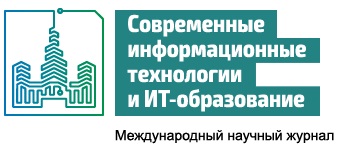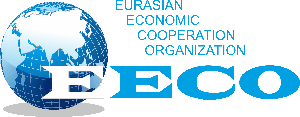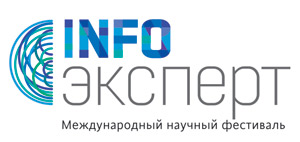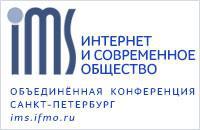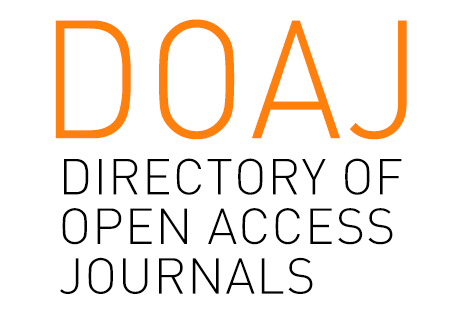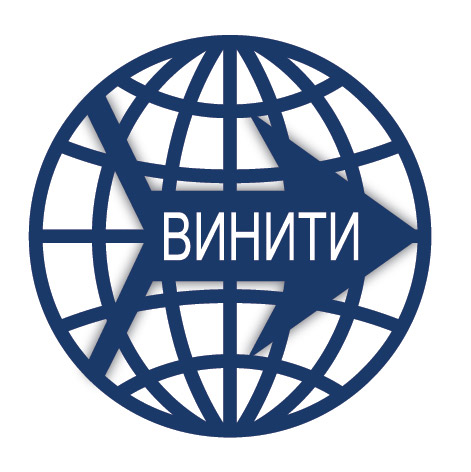Сравнительные характеристики платформ контейнеризации Docker и Singularity
Аннотация
На сегодняшний день, для решения задач различной сложности требуются высокие мощности и применяются повышенные требования к оборудованию. Это задачи инженерного проектирования, большой спектр задач научных вычислений, системы моделирования, анализ данных и т.д. Как правило, любая отрасль имеет задачи, для выполнения которых требуются высокопроизводительные вычисления. Для решения таких задач, используются высокопроизводительные вычислительные системы, основу которых составляют технологии параллельных вычислений, технологии виртуализации и контейнеризации.
Параллельные вычисления позволяют значительно увеличить производительность вычислительных систем, при выполнении одной и той же программы. Технологии виртуализации позволяют создать на одном физическом компьютере несколько виртуальных машин, каждая из которых работает под управлением отдельной операционной системы. Контейнеры ‒ это одно из самых перспективных направлений развития современных информационных технологий. В настоящее, время контейнеры используются во многих областях, включая: веб-приложения (например, Apache Tomcat), мобильные приложения, системы управления базами данных, а также для развёртывания серверных сред. По мнению разработчиков, контейнеры позволят упростить разработку и развернуть высокопроизводительные вычислительные системы, значительно повысить их производительность и надёжность.
В данной статье представлены сравнительные характеристики платформ контейнеризации Docker и Singularity, в аспекте решения таких проблем как портируемость кода между локальной средой выполнения и промышленной средой приложения. Приведены примеры использования данных платформ для решения задач, которые являются актуальными в настоящее время. Рассмотрены наиболее важные моменты работы данных платформ применительно к высокопроизводительным вычислительным кластерам.
Литература
2. Benjamin D., Childers T., Lesny D., Oleynik D., Panitkin S., Tsulaia V., Yang W., Zhao X. Building and using containers at HPC centres for the ATLAS experiment. EPJ Web of Conferences. 2019;214:07005.https://doi.org/10.1051/epjconf/201921407005
3. Ozturk N., Undrus A., Vogel M., Forti A. Containerization in ATLAS Software Development and Data Production. EPJ Web of Conferences. 2021;251:02017. https://doi.org/10.1051/epjconf/202125102017
4. Bocchi E., Blomer J., Mosciatti S., Valenzuela A. CernVM-FS powered container hub. EPJ Web of Conferences. 2021;251:02033. https://doi.org/10.1051/epjconf/202125102033
5. Valassi A., Alef M., Barbet J.-M., Datskova O., De Maria R., Medeiros M.F., Giordano D., Grigoras C., Hollowell C., Javurkova M., Khristenko V., Lange D., Michelotto M., Rinaldi L., Sciabà A., van der Laan C. Using HEP experiment workflows for the benchmarking and accounting of WLCG computing resources. EPJ Web of Conferences. 2020;245:07035. https://doi.org/10.1051/epjconf/202024507035
6. Godlove D. Singularity: Simple, secure containers for compute-driven workloads. In: Proceedings of the Practice and Experience in Advanced Research Computing on Rise of the Machines (learning) (PEARC '19). New York, NY, USA: Association for Computing Machinery; 2019. Article number: 24. p. 1-4. https://doi.org/10.1145/3332186.3332192
7. Shahidullah K., Md Sadun H., Ali T., Turgay K. Container Technologies For ARM Architecture: A Comprehensive Survey Of The State-of-the-art. IEEE Access. 2022;10:84853-84881. http://dx.doi.org/10.1109/ACCESS.2022.3197151
8. Bhardwaj A., Krishna C.R. Virtualization in Cloud Computing: Moving from Hypervisor to Containerization A Survey. Arabian Journal for Science and Engineering. 2021;46(9):8585-8601. https://doi.org/10.1007/s13369-021-05553-3
9. Liu P., Ji S., Fu L., Lu K., Zhang X., Lee W.-H., Lu T., Chen W., Beyah R. Understanding the Security Risks of Docker Hub. In: Chen L., Li N., Liang K., Schneider S. (eds.) Computer Security ESORICS 2020. ESORICS 2020. Lecture Notes in Computer Science. Vol. 12308. Cham: Springer; 2020. p. 257-276. https://doi.org/10.1007/978-3-030-58951-6_13
10. Martin A., Raponi S., Combe T., Pietro R. Docker ecosystem Vulnerability Analysis. Computer Communications. 2018;122:30-43. https://doi.org/10.1016/j.comcom.2018.03.011
11. Zhu H., Gehrmann C. Lic-Sec: An enhanced AppArmor Docker security profile generator. Journal of Information Security and Applications. 2021;61:102924. https://doi.org/10.1016/j.jisa.2021.102924
12. De Benedictis M., Lioy A. Integrity verification of Docker containers for a lightweight cloud environment. Future Generation Computer Systems. 2019;97:236-246. https://doi.org/10.1016/j.future.2019.02.026
13. Baresi L., Quattrocchi G., Rasi N. A Qualitative and Quantitative Analysis of Container Engines. Journal of Systems and Software. 2024;210:111965. https://doi.org/10.1016/j.jss.2024.111965
14. Mitra-Behura S., Fiolka R.P., Daetwyler S. Singularity Containers Improve Reproducibility and Ease of Use in Computational Image Analysis Workflows. Frontiers in Bioinformatics. 2022;1:757291. https://doi.org/10.3389/fbinf.2021.757291
15. Garofoli A., Paradiso V., Montazeri H., Jermann P., Roma G., Tornillo L., Terracciano L., Piscuoglio S., Ng C. PipeIT: Singularity Container for Molecular Diagnostic Somatic Variant Calling on Ion Torrent NGS Platform. The Journal of Molecular Diagnostics. 2019;21(5):884-894. https://doi.org/10.1016/j.jmoldx.2019.05.001
16. Zhou N., Georgiou Y., Pospieszny M., Zhong L., Zhou H., Niethammer C., Pejak B., Marko O., Hoppe D. Container orchestration on HPC systems through Kubernetes. Journal of Cloud Computing: Advances, Systems and Applications. 2021;10(1). https://doi.org/10.1186/s13677-021-00231-z
17. Kurtzer G.M., Sochat V., Bauer M.W. Singularity: Scientific containers for mobility of compute. PLoS ONE. 2017;12(5):e0177459. https://doi.org/10.1371/journal.pone.0177459
18. Lee H., Kwon S., Lee J.-H. Experimental Analysis of Security Attacks for Docker Container Communications. Electronics. 2023;12(4):940. https://doi.org/10.3390/electronics12040940
19. Alyas T., Ali S., Khan H., Samad A., Alissa K., Saleem M.A. Container Performance and Vulnerability Management for Container Security Using Docker Engine. Security and Communication Networks. 2022;2022. https://doi.org/10.1155/2022/6819002
20. Reis D., Piedade B., Correia F., Dias J., Aguiar A. Developing Docker and Docker-Compose Specifications: A Developers Survey. IEEE Access. 2022;10:2318-2329. https://doi.org/10.1109/ACCESS.2021.3137671
21. Maruszczak A., Walkowski M., Sujecki S. Base Systems for Docker Containers Security Analysis. In: 2022 International Conference on Software, Telecommunications and Computer Networks (SoftCOM). Split, Croatia: IEEE Computer Society; 2022. p. 1-5. https://doi.org/10.23919/SoftCOM55329.2022.9911523
22. Combe T., Martin A., Pietro R. To Docker or Not to Docker: A Security Perspective. IEEE Cloud Computing. 2016;3(5):54-62. https://doi.org/10.1109/MCC.2016.100
23. Priedhorsky R., Randles T. Charliecloud: unprivileged containers for user-defined software stacks in HPC. In: Proceedings of the International Conference for High Performance Computing, Networking, Storage and Analysis (SC '17). New York, NY, USA: Association for Computing Machinery; 2017. Article number: 36. https://doi.org/10.1145/3126908.3126925
24. Haji L.M., Zeebaree S.R.M., Ahmed O.M., Sallow A.B., Jacksi K., Zebari R.R. Dynamic Resource Allocation for Distributed Systems and Cloud Computing. Test Engineering and Management. 2020;83:22417-22426. Available at: http://www.testmagzine.biz/index.php/testmagzine/article/view/11297 (accessed 04.05.2023).
25. Hu Y., Zhou H., de Laat C., Zhao Z. Concurrent container scheduling on heterogeneous clusters with multi-resource constraints. Future Generation Computer Systems. 2020;102;562-573. https://doi.org/10.1016/j.future.2019.08.025

Это произведение доступно по лицензии Creative Commons «Attribution» («Атрибуция») 4.0 Всемирная.
Редакционная политика журнала основывается на традиционных этических принципах российской научной периодики и строится с учетом этических норм работы редакторов и издателей, закрепленных в Кодексе поведения и руководящих принципах наилучшей практики для редактора журнала (Code of Conduct and Best Practice Guidelines for Journal Editors) и Кодексе поведения для издателя журнала (Code of Conduct for Journal Publishers), разработанных Комитетом по публикационной этике - Committee on Publication Ethics (COPE). В процессе издательской деятельности редколлегия журнала руководствуется международными правилами охраны авторского права, нормами действующего законодательства РФ, международными издательскими стандартами и обязательной ссылке на первоисточник.
Журнал позволяет авторам сохранять авторское право без ограничений. Журнал позволяет авторам сохранить права на публикацию без ограничений.
Издательская политика в области авторского права и архивирования определяются «зеленым цветом» в базе данных SHERPA/RoMEO.
Все статьи распространяются на условиях лицензии Creative Commons «Attribution» («Атрибуция») 4.0 Всемирная, которая позволяет другим использовать, распространять, дополнять эту работу с обязательной ссылкой на оригинальную работу и публикацию в этом журналe.
